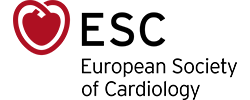Cardiovascular prevention entails several subtleties, spanning from the precise definition of cardiovascular risk factors and disease, to different level of preventive strategies, which can range from education and lifestyle recommendations (e.g. smoking cessation) to dietary, pharmacologic and more invasive interventions.(1,2) A key dimension of cardiovascular health maintenance and thus prevention is when preventive interventions are applied during the natural history of cardiovascular disease. Focusing indeed on specific timeframes, we can typically distinguish primordial, primary, secondary and tertiary preventative efforts (Table 1).(3) Clearly, there is typically a strong association between the phase in the natural history of a disease and the number needed to intervene to prevent one event, such that number-needed-to-treat (NNT). Another crucial aspect is the individualized risk-benefit assessment, possibly quantifiable with the NNT/number-needed-to-harm (NNH) ratio.(4) Such risk-benefit profile is impactful also to maximize long-term compliance.
While Professor Sir Nicholas Wald is unlikely to be awarded a Nobel prize, we should clearly bear in mind his seminal contributions to prevention at large, including cardiovascular prevention.(5) Most poignantly for cardiovascular practitioners, we must thank him for his ingenuity in applying the concept of the triple test (later quad test) proven effective for neural tube defect diagnosis to pharmacologic prevention.(6) Indeed, in 2003 Wald and Law proposed an apparently banal but actually genial idea: the combination of several effective and tolerated drugs into a single pill, the polypill, as a tool to maximize preventive effectiveness and adherence.(7) The polypill concept has been expanded over the years to many other clinical areas, including secondary cardiovascular prevention.(8) While each individual with established cardiovascular disease might warrant individualized diagnostic, prognostic and management strategies, several cardiovascular patients are more alike than different and thus suitable for being prescribed secondary prevention polypills.
The meta-analysis conducted by Rivera and colleagues and published recently in the European Journal of Preventive Cardiology is a perfect useful summary of the favourable effects of polypills designed for secondary cardiovascular prevention.(9) Indeed, in a pooled analysis including 8 randomized trials enrolling as many as 6541 patients, followed for a period of time ranging between 6 and 60 months, a polypill could significantly reduce cardiovascular mortality, even if all-cause mortality was relatively similar. Notwithstanding the limitations in the primary studies, including heterogeneity of treatments and variable/short follow-up, this review confirms the safety and promising impact of a polypill approach in cardiovascular prevention. A key caveat remains how to pick the most appropriate polypill for each patient of interest, in light of the individual features, the phase of cardiovascular disease, and the goal of prevention. Furthermore, it should be borne in mind that the more the agents included in a polypill, the more the potential combinations (Figure 1), and these figures underestimate the role of dosage of each agent.(10)
In conclusion, without viewing polypills as the Holy Grail of cardiovascular prevention, it is clear that their role is confirmed and will progressively grow even more, helping societies as well as individuals to reach their prevention goals.
Table 1. Stages of cardiovascular prevention
Stage | Primordial |
Aim | Avoiding the development of risk factors |
Stage | Primary |
Aim | Avoiding the development of disease |
Stage | Secondary |
Aim | Reducing the severity of the clinical manifestation of disease or reducing the risk of recurrence |
Stage | Tertiary |
Aim | Avoiding the functional impact of disease |
Stage | Quaternary |
Aim | Avoiding overmedicalization and unethical interventions |
Stage |
Aim |
|---|---|
| Primordial | Avoiding the development of risk factors |
| Primary | Avoiding the development of disease |
| Secondary | Reducing the severity of the clinical manifestation of disease or reducing the risk of recurrence |
| Tertiary | Avoiding the functional impact of disease |
| Quaternary | Avoiding overmedicalization and unethical interventions |
Figure 1. Possible combinations of polypill as a function of drugs available and chosen sample of polypill (computations performed with https://www.omnicalculator.com/statistics/possible-combinations).

Note: The content of this article reflects the personal opinion of the author/s and is not necessarily the official position of the European Society of Cardiology.


 Our mission: To reduce the burden of cardiovascular disease.
Our mission: To reduce the burden of cardiovascular disease.